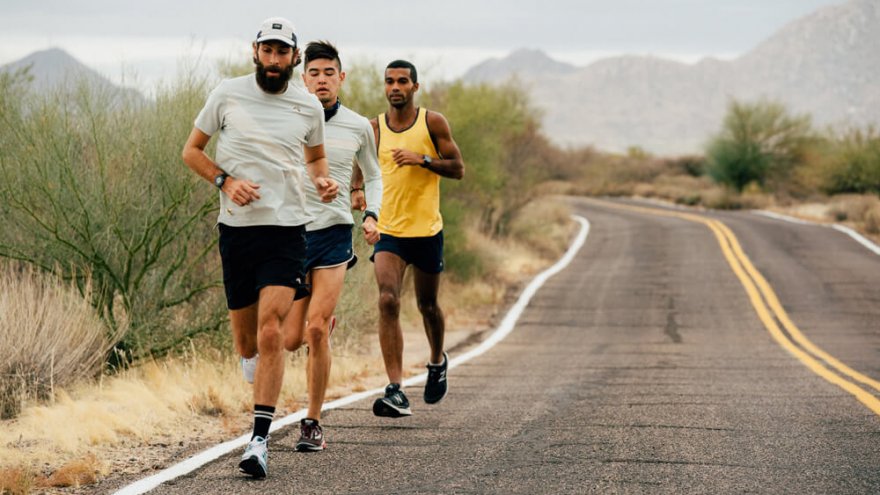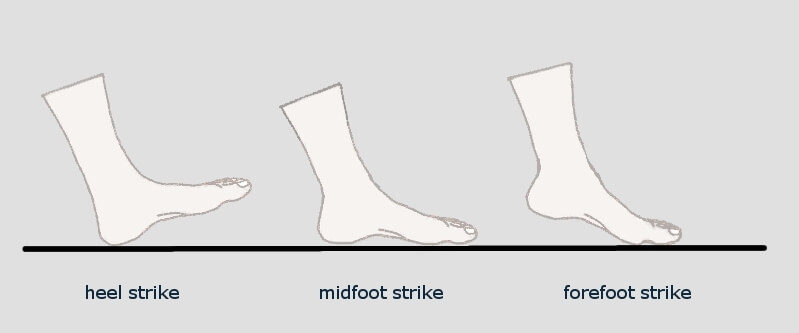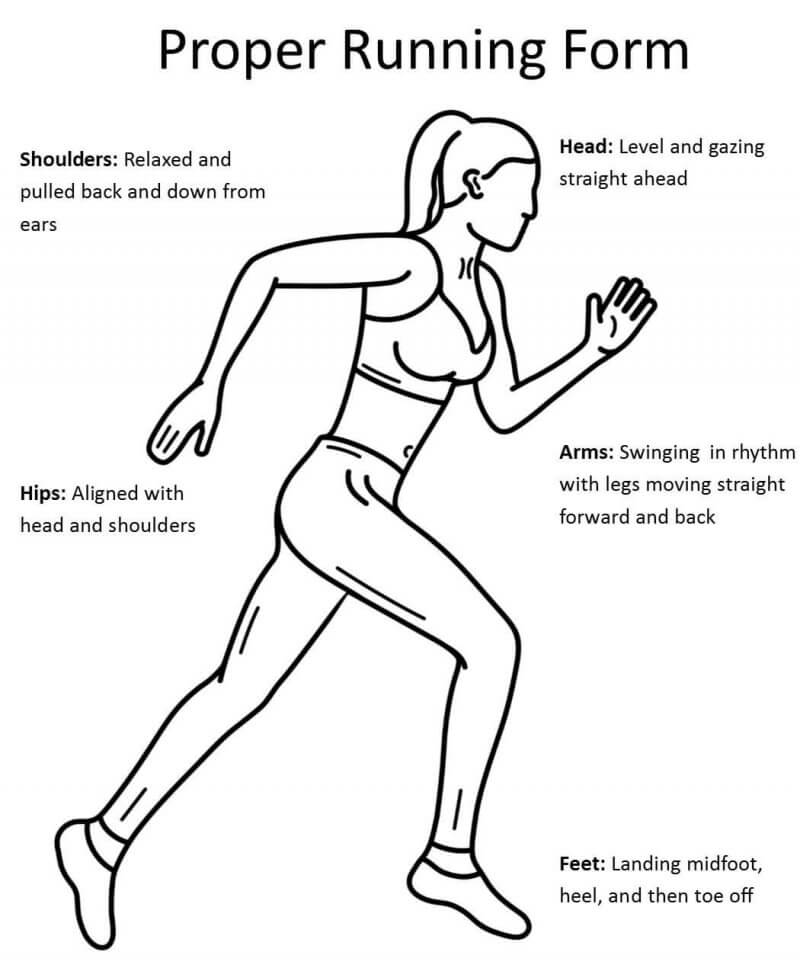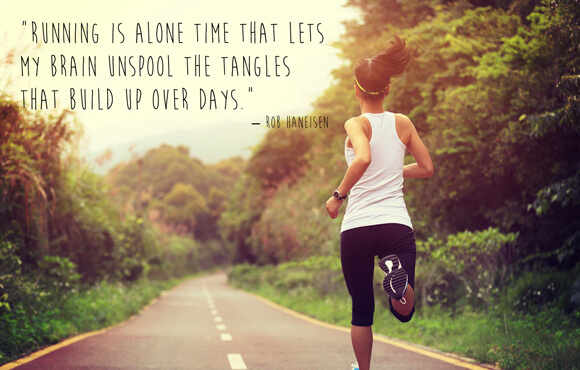What Your Running Style Says About You

When discussing different running styles, there are actually multiple ways to look at this. Hear me out. When talking about a running style, are you referring to foot strike? Proper form? Training techniques? Something else?
What Are The Different Running Styles?
Some areas for discussion are included here. First, there is foot strike. A runner’s strike is as individual as the athlete. Form is another topic of conversation. Training style also comes into play. This can refer to your training plan and if you train alone or with company.
Foot Strikes
Discussions on running style often bring about the topic of foot strike. There are three basic types of strike: the forefoot strike, mid-foot strike and heel strike. While most people agree that the fore or mid-foot strike is mechanically better, many elite runners have a heel strike. And let’s face it, you can’t argue with success. Let’s talk about those different types of foot strikes.
Many runners argue that a forefoot strike is not only most efficient but that it will help you to avoid injuries. The barefoot running movement is built upon the foundation that your feet are naturally predisposed to move and impact in a certain way. The idea is that if you barefoot run, your body will do what it was meant to do. This should, in theory, result in fewer injuries to the runner.

Other runners have a mid-foot strike. This means when they impact the ground it is with the center part of the foot. Although not seen as quite as efficient as a forefoot strike, this is a common way to run. Not quite the “brake” of heel striking, it also tends to put less strain on the Achilles as forefoot striking does.
That leaves the heel strike. With this type of running, the heel of your foot hits the ground first with every step. Although many people who specialize in running mechanics swear that you need to change if this is how you run, there are many elites with this running style.
Your foot strike may or may not say something about you as a runner. Some people who were sprinters in high school, me for example, may lean toward a forefoot strike because that is how they ran. If you have never done any distance running and suddenly as an adult start running more mileage, your instinct may be to run up on your toes as you have always done.
Form
There are many aspects to running form, and the breakdown of some of these things, that runners can look for.
✓ Head: Your head should be properly positioned so it is steadily looking just ahead of the runner. Your head should not wobble left to right when you run.
✓ Shoulders:Resist the urge to shrug your shoulders as you run. Running tense is not good form!
✓ Arms: Swing your arms at your side, focusing on a complete arm swing. You should resist the urge to cross your arms in front of you as you fatigue.
✓ Posture: Run straight and erect. Don’t hunch over.
✓ Stride: Don’t take short, choppy steps. Try to extend your stride without overextending it. It is a delicate balance.
✓Relax: Don’t tense your body, including your hands.
If you run tense, it could mean you have too much stress in your life. Running can, and should, be an excellent stress reliever. Try to focus on running relaxed! If you have bunched-up shoulders, be intentional about relaxing them. Does your jaw tense up? Think about making it slack looser. Don’t hold your hands in tight fists!

On the other hand, you don’t want to be so relaxed that you lose all semblance of good form. Running all “loosey goosey” is also not good!
Training Styles
Athletes also differ in training styles. Some runners find a very detailed training plan that is all running and they follow it to fidelity. These athletes tend to be training for a specific race that is on the calendar in the future. Athletes who run this way are focused, dedicated and driven toward a goal. That goal may be a time or just to complete the plan. Either way, they stick to it.
Other athletes prefer balance in their training. These people might run a few days a week, dedicate a couple of workouts to strength training, and also have some cross-training. A runner falling into this category could also have an end goal in mind, or could just enjoy multiple types of workouts.
Then there are people who just go where the spirit moves them on any given day. That might mean a run and it could end up with the athlete jumping into a last-minute spin class. Free spirit athletes tend to enjoy flexibility in their schedule. If this is how you prefer to work out, it could make it difficult for you to train for a distance race that requires high mileage. It could also make getting a PR tough, but not impossible.
Long Ranger, Accountability Partner or Group Mentality?
The last category runners tend to divide into is if they run alone, with a training partner or in groups. Of course, some people fall into all of these categories. Lone Ranger runners can prefer that based on their schedule. Maybe you have a job where your shift varies from week to week, or you have young children at home, or you live far away from any of your running friends.
Another reason people prefer to run alone is that they have very specific things they are trying to accomplish. If your plan calls for six-mile repeats on a specific pace, you may not want or need company for that. Athletes who are very dialed into their own training sometimes prefer not to have distractions.

Accountability partners are good for many runners. Whether you run before dawn or after work, it can be hard to motivate yourself to do a workout. Knowing someone else is counting on you to show up helps get some people out the door.
There are also runners who prefer running in groups. If you are fortunate enough to have a running group near you, you may wish to try this! Group running is social, can be a fun atmosphere, and can also challenge you to run faster and/or further than you have before!
How Can I Improve Your Running Style?
As a coach, if people ask me how to improve their running style, my most simple response is to work on form. If you focus on the things listed above, you should find yourself running smoother. My second suggestion is to consider adding core work to your fitness regiment if you don’t already. Having a strong core is essential to good form for many reasons.
Beyond that, the best advice I can give is to run relaxed. Lastly, whatever type of runner you are, be it a lone runner or group run, I would encourage you to try mixing that up. I love a group run but sometimes hammering it out alone on the track is the best workout of the week. For an athlete, balance is king.
Latest Articles
 Is Running on a Treadmill Easier Than Running Outside?Runners have their own preferences, whether it is treadmill running, running outside on the road, or exploring trails. So...
Is Running on a Treadmill Easier Than Running Outside?Runners have their own preferences, whether it is treadmill running, running outside on the road, or exploring trails. So... Is It OK to Use Trail Running Shoes on the Road?While trail running shoes can be used on roads, especially in situations where a runner encounters mixed terrains or pref...
Is It OK to Use Trail Running Shoes on the Road?While trail running shoes can be used on roads, especially in situations where a runner encounters mixed terrains or pref... How to Fix Sore Quads After Running?Rest, ice, gentle stretching, and over-the-counter pain relievers can help soothe sore quads after running. Also, ensure ...
How to Fix Sore Quads After Running?Rest, ice, gentle stretching, and over-the-counter pain relievers can help soothe sore quads after running. Also, ensure ... 10 Fruits With The Most Electrolytes to Replace Sports DrinksThese fruits are high in electrolytes such as potassium, magnesium, and calcium, essential for hydration, muscle function...
10 Fruits With The Most Electrolytes to Replace Sports DrinksThese fruits are high in electrolytes such as potassium, magnesium, and calcium, essential for hydration, muscle function...

